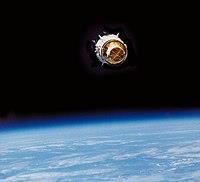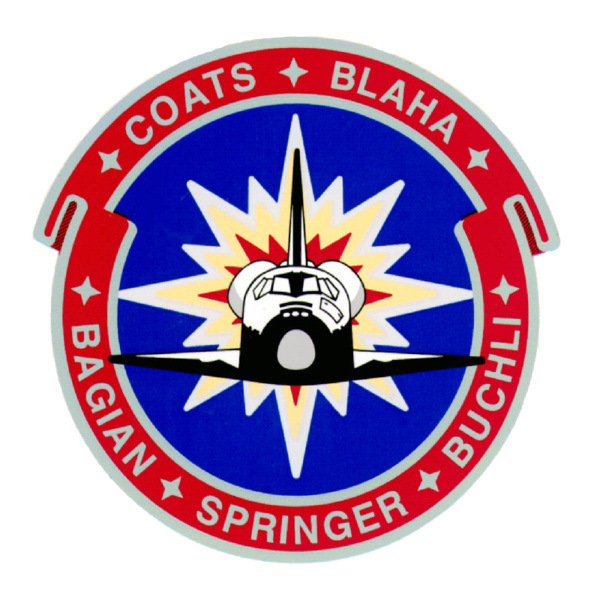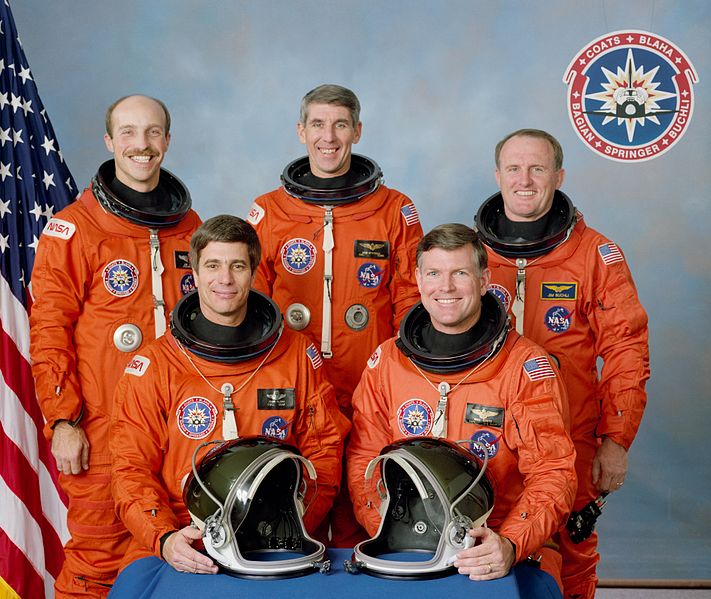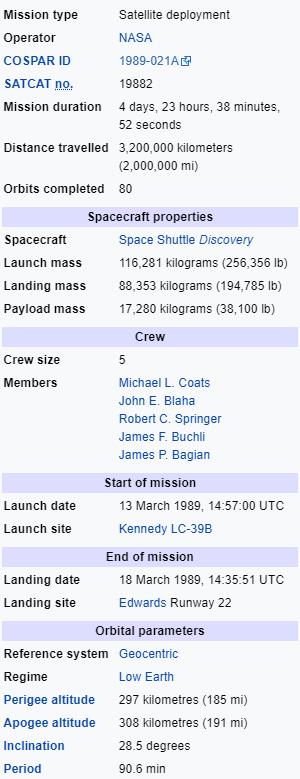Michael Coats
(Second Space Flight)
John E. Blaha
(First Space Flight) Mission Specialist 1:
James P. Bagian
(Third Space Flight) Mission Specialist 2:
James F. Buchli
(First Space Flight) Mission Specialist 3:
Robert C. Springer
STS-29 was a NASA Space Shuttle mission, during which Space Shuttle Discovery inserted a Tracking and Data Relaying Satellite (TDRS) into Earth's orbit. It was the third shuttle mission following the Challenger disaster, of 1986, and launched from Kennedy Space Centre, Florida, on 13 March 1989. STS-29 was the eighth flight of Discovery and the 28th Space Shuttle mission overall; its planned predecessor, STS-28 was delayed until August 1989.
Some conspiracy theorists believe that recorded conversations between STS-29 and its mission controllers prove the existence of alien spacecraft. However, it is most likely that these transmissions are in reality a mere hoax. (However, one should keep an open mind).
(First Space Flight)
A free template by Lucknowwebs.com for WYSIWYG WebBuilder 8
Astronauts:
The Space Shuttle Missions
STS-29
Study
Research
Main Index
Space Cosmology
Science Research
*
About
Science Research
Science Theories
Desk
Site Map
BookShelf
Copyright © by Nigel G Wilcox · All Rights reserved · E-Mail: ngwilcox100@gmail.com
Designed by Nigel G Wilcox
Powered By AM3L1A
Pages within this section: USA Shuttle Mission Flights
STS-29
Pages within this section:
9
M
8
SM
Sub-Menu
menu
-
26
27
28
29
30
31
32
Command Pilot:
Pilot:
The mission was technically designated STS-29R as the original STS-29 designator belonged to STS-61A, the 22nd Space Shuttle mission. Official documentation and paperwork for that mission contained the designator STS-29 when it was allocated to Space Shuttle Columbia & later as STS-30 when allocated to Challenger. The 'R' stood for 'Recycled' or 'Re-manifested'. As STS-51L was designated STS-33, future flights with the STS-26 through STS-33 designators would require the 'R' in their documentation to avoid conflicts in tracking data from one mission to another.
Discovery lifted off from Pad B, Launch Complex 39, Kennedy Space Center, at 9:57 am EST on 13 March 1989. The launch was originally scheduled for 18 February, but was postponed to allow for the replacement of faulty liquid oxygen turbopumps on the three main engines. The amended target date of 11 March was postponed by 1 day, because of the failure of a master event controller (MEC) #2 when it was powered up during prelaunch checkout, as well as an additional day to replace a faulty fuel preburner oxidizer valve (FPOV).[5] On the rescheduled launch day of 13 March, the launch was delayed for nearly two hours because of ground fog and high upper winds.[5] A waiver was approved for the orbiter's wing loads.
The primary payload was the third and final component of the Tracking and Data Relay Satellite (TDRS) constellation in geosynchronous orbit. The three on-orbit satellites were stationed over the equator at about 22,300 miles above Earth; two of them were positioned 130 degrees apart, while the third was located between them as an on-orbit spare.
On Flight Day 1, one of three cryogenic hydrogen tanks which supplied shuttle's electricity-generating fuel cells exhibited erratic pressure fluctuations. It was deactivated while engineers studied the problem, and the crew was told to conserve electrical power. The tank was reactivated on Flight Day 3, 15 March, and operated successfully thereafter. It was also on Day 1 at 6:42am EST that the Goddard Amateur Radio Club monitored and recorded the shuttle pilot Blaha say, "Houston this is Discovery. We still have the alien spacecraft under observance," before the shuttle switched to secure communications.
Discovery landed on 18 March 1989, after orbit 80, one orbit earlier than planned, in order to avoid possible excessive wind buildup expected at the landing site. The shuttle touched down on Runway 22 at Edwards Air Force Base, California, at 9:35 am EST. The total mission duration was 4 days, 23 hours, and 39 minutes.

TDRS-4 after deployment.
Data Courtesy Wikipedia.org














